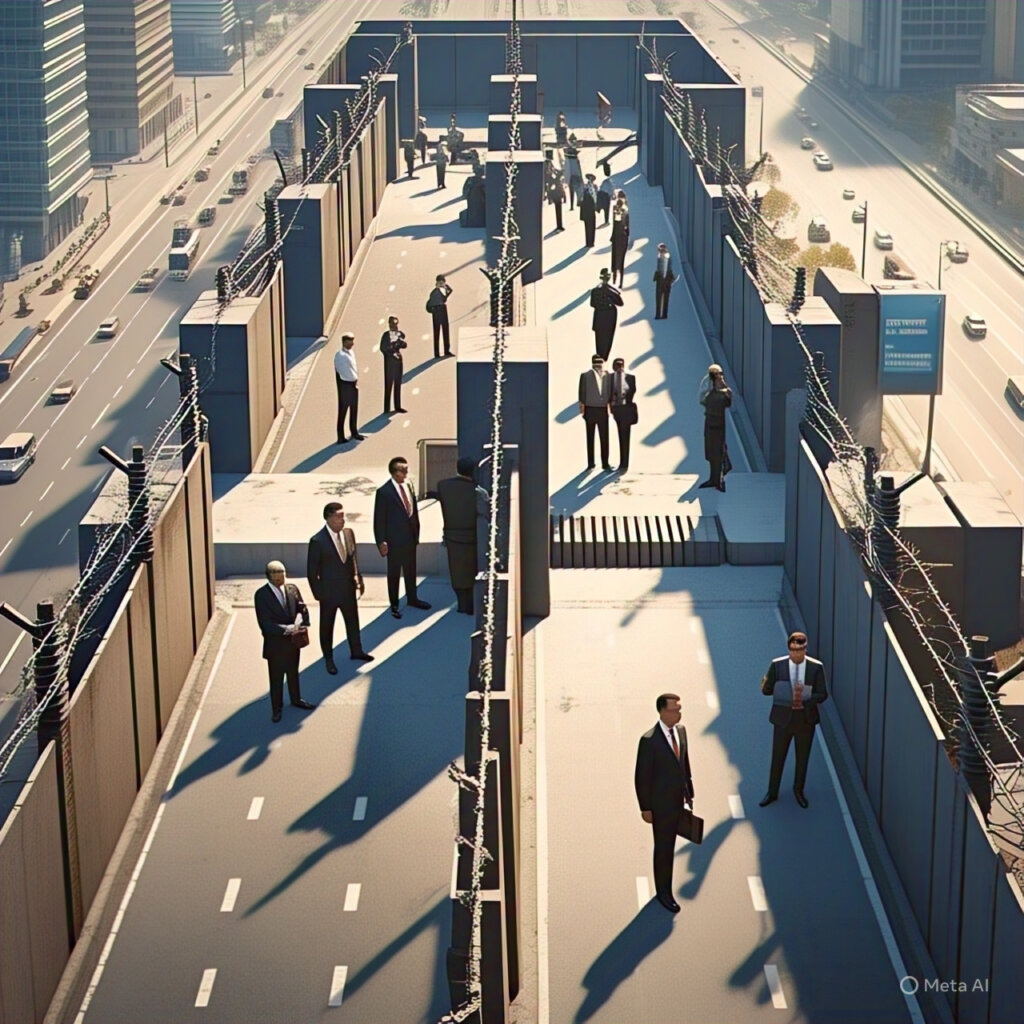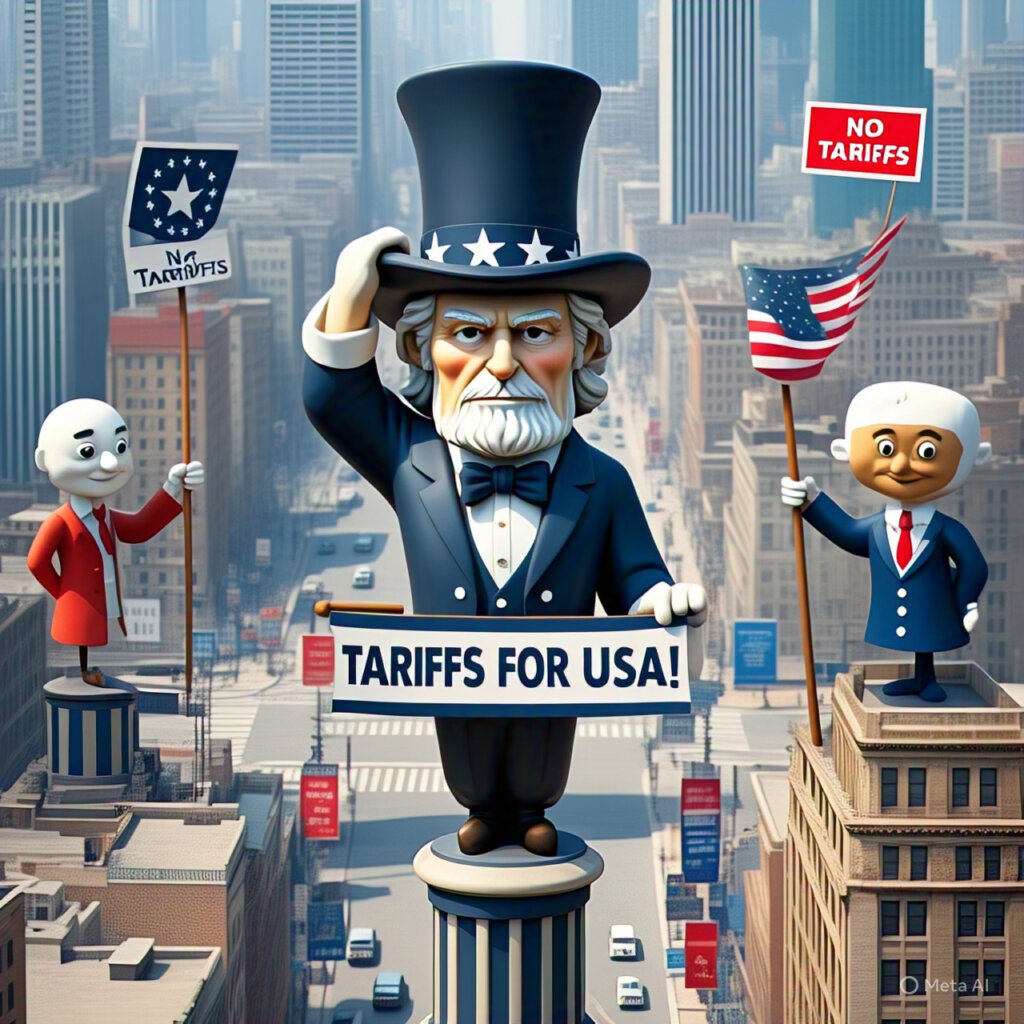The Meaning of Tariff : Tariffs are a fundamental aspect of international trade, influencing economies, industries, and consumer prices worldwide. While they may seem like a modern economic tool, their origins trace back thousands of years. This article provides an in-depth exploration of tariffs—what they are, their historical evolution, who first imposed them, their economic effects, and their role in today’s global trade landscape. By the end of this guide, you’ll have a clear understanding of how tariffs shape commerce, why governments use them, and their long-term consequences on businesses and consumers.
Table of Contents

What Is a Tariff? (The Meaning of Tariff)
A tariff is a tax imposed by a government on goods and services imported from or exported to other countries. It serves multiple purposes:
- Protecting Domestic Industries – By increasing the cost of foreign goods, tariffs make locally produced items more competitive.
- Generating Government Revenue – Before income taxes became widespread, tariffs were a primary source of national income.
- Regulating Trade Relations – Countries use tariffs as leverage in trade negotiations and to control the flow of goods.
- National Security – Essential goods like steel, technology, and energy may be tariffed to reduce reliance on foreign suppliers.
Types of Tariffs
Governments apply different tariff structures depending on their economic goals:
- Ad Valorem Tariff – A percentage-based tax on the item’s value (e.g., 15% on a 1,000car=1,000car=150 tariff).
- Specific Tariff – A fixed fee per unit (e.g., $3 per barrel of oil).
- Compound Tariff – A combination of ad valorem and specific tariffs (e.g., 5% + $2 per kg).
- Prohibitive Tariff – Set so high that it effectively blocks imports.
History of Tariffs: From Ancient Times to Modern Trade Wars
Early Origins of Tariffs
The concept of taxing trade dates back to ancient civilizations:
- Ancient Egypt (2000 BCE) – One of the earliest recorded tariffs were imposed on imported luxury goods like spices, incense, and textiles.
- Ancient Greece and Rome – These civilizations taxed goods entering their ports to fund public infrastructure and military campaigns.
- Medieval Europe – Feudal lords charged “tolls” or “customs duties” on merchants crossing their territories.
The Mercantilist Era (16th-18th Century)
During the Age of Exploration, European powers like Britain, Spain, and Portugal used tariffs to:
- Protect local industries from foreign competition.
- Accumulate wealth by exporting more than importing (favorable balance of trade).
- Fund colonial expansion through trade taxes.
Example: Britain’s Navigation Acts (1651) restricted imports to only British ships, boosting its maritime dominance
The Industrial Revolution and Protectionism (19th Century)
As industrialization spread, nations imposed tariffs to shield their growing industries:
- U.S. Tariff of 1789 – The first major U.S. tariff law, signed by President George Washington, aimed at funding the new government and protecting American manufacturers.
- Britain’s Corn Laws (1815-1846) – High tariffs on imported grain protected British farmers but raised food prices, leading to protests and eventual repeal.
20th Century: Tariffs and Global Trade Conflicts
The 20th century saw extreme tariff policies with mixed consequences:
- Smoot-Hawley Tariff (1930, USA) – Raised U.S. tariffs on over 20,000 goods, worsening the Great Depression by stifling international trade.
- General Agreement on Tariffs and Trade (GATT, 1947) – Established to reduce tariffs and promote free trade, later evolving into the World Trade Organization (WTO).
21st Century: Modern Tariff Wars
Recent decades have seen high-profile tariff disputes:
- U.S.-China Trade War (2018-Present) – Both nations imposed billions in tariffs, disrupting global supply chains.
- Brexit and EU Tariffs – The UK’s exit from the EU led to new tariff negotiations affecting trade flows.
Why Do Governments Impose Tariffs?
1. Protecting Domestic Industries
Tariffs help local businesses compete against cheaper foreign imports.
Example: The U.S. imposed steel tariffs in 2018 to protect its metal industry from Chinese overproduction.
2. National Security Concerns
Essential goods like defense equipment, semiconductors, and energy may be tariffed to prevent foreign dependency.
3. Retaliatory Trade Measures
If one country imposes unfair tariffs, others may respond with their own.
Example: China retaliated against U.S. tariffs by taxing American agricultural exports.
4. Revenue Generation
Before income taxes, tariffs were a major government income source. Some developing nations still rely on them.
Effects of Tariffs on the Economy
Positive Effects
✅ Boosts Local Production – Domestic industries grow due to reduced foreign competition.
✅ Creates Jobs – Protected industries hire more workers.
✅ Increases Government Revenue – Tariffs contribute to public funding.
Negative Effects
❌ Raises Consumer Prices – Imported goods become more expensive.
❌ Triggers Trade Wars – Other nations may retaliate, harming exports.
❌ Reduces Efficiency – Local industries may lack innovation without competition.
Famous Historical Examples of Tariffs
| Event | Year | Impact |
| U.S. Tariff Act | 1789 | First major U.S. tariff, funded the new government. |
| Britain’s Corn Laws | 1815-1846 | Protected farmers but caused food shortages. |
| Smoot-Hawley Tariff | 1930 | Deepened the Great Depression. |
| U.S.-China Trade War | 2018-Present | Disrupted global supply chains. |
Modern-Day Tariffs: Trends and Controversies
1. U.S. Steel and Aluminum Tariffs (2018)
- Goal: Protect American metal industries.
- Result: Higher costs for manufacturers using imported metals.
2. India’s Tech Tariffs
- Goal: Encourage local electronics manufacturing.
- Result: Increased prices for smartphones and computers.
3. European Carbon Border Tax (2023)
- Goal: Tax imports based on carbon emissions.
Result: Pushes global manufacturers toward greener production.
Conclusion: The Future of Tariffs
Tariffs have shaped global trade for millennia, evolving from ancient customs duties to modern economic weapons. While they protect domestic industries and generate revenue, they can also spark trade wars and increase consumer costs.
As globalization continues, nations must balance protectionism with free trade to ensure economic stability. Understanding tariffs helps businesses, policymakers, and consumers navigate the complexities of international commerce.
Click here to Contact us for more details
Frequently Asked Questions (FAQs)
-
Q1: Who benefits the most from tariffs ?
Ans : Domestic producers and governments benefit, while consumers often face higher prices.
-
Q2: Can tariffs lead to inflation?
Ans : Yes, if tariffs raise the cost of essential imports, overall prices may increase.
-
Q3: Are tariffs still effective today?
A: They can be, but overuse may harm trade relationships and economic growth.
-
Q4: What’s the difference between tariffs and quotas?
A: Tariffs tax imports, while quotas limit the quantity of goods allowed in.
-
Q5: How do tariffs impact developing countries?
A: They can protect local industries but may also reduce access to affordable imports.
-
Q6: What is a retaliatory tariff?
A: A tariff imposed in response to another country’s trade restrictions, often escalating trade tensions.
-
Q7: How are tariff rates determined?
A: Governments set rates based on economic policies, trade agreements, and industry needs.
-
Q8: Do tariffs apply to services?
A: Typically no, tariffs mainly apply to physical goods, though some trade agreements include service regulations.
-
Q9: Can tariffs be removed?
A: Yes, through trade negotiations, free trade agreements, or policy changes.
-
Q10: What is a trade war?
A: A cycle of increasing tariffs between nations, leading to reduced trade and economic strain.
-
Q11: How do tariffs affect small businesses?
A: They may struggle with higher import costs but could benefit from reduced foreign competition.
-
Q12: What role does the WTO play in tariffs?
A: The WTO regulates global trade rules and helps resolve tariff disputes between nations.

